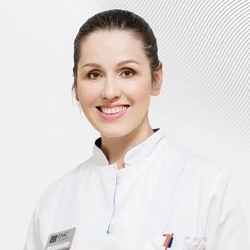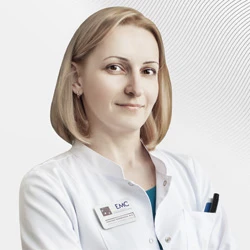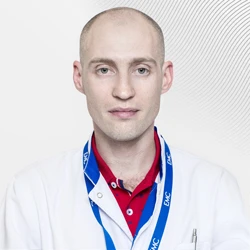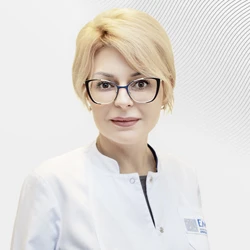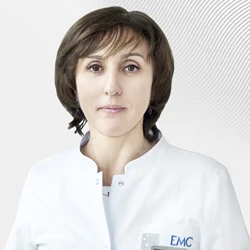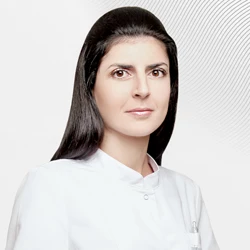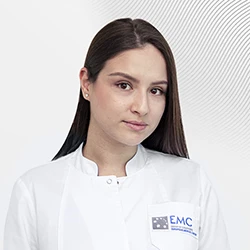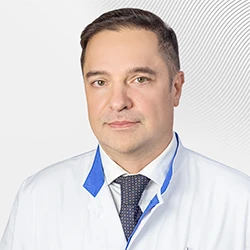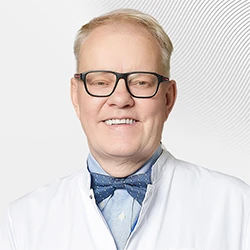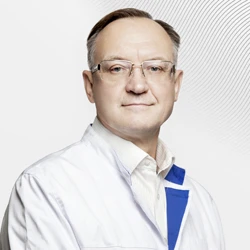Cancer of the esophagus
Incidence of esophageal cancer
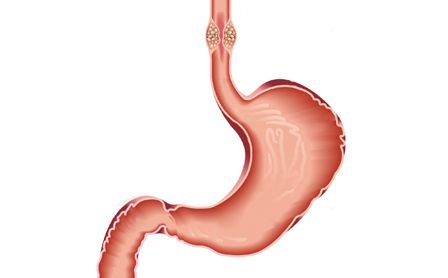 Men get esophageal cancer 3.5 times more often than women (in Russia). The peak incidence occurs at the age of 50-59 years. In our country, more than 7 thousand new cases of esophageal cancer are detected annually.
Men get esophageal cancer 3.5 times more often than women (in Russia). The peak incidence occurs at the age of 50-59 years. In our country, more than 7 thousand new cases of esophageal cancer are detected annually.
There are two main types of malignant tumors, they account for more than 95% of all esophageal neoplasms:
-
Squamous cell carcinoma is the most common form of esophageal cancer. Squamous cell carcinoma is more common in the upper and middle parts of the esophagus
-
Adenocarcinoma – usually develops in the lower part of the esophagus on the border with the stomach and is associated with the discharge of gastric juice onto the mucous membrane of the lower part of the esophagus (Barrett's esophagus);
Other tumors are much less common:
-
Esophageal soft tissue sarcoma;
-
Gastrointestinal stromal tumor (GIST)
Causes and risk factors of esophageal cancer
Long-term gastroesophageal reflux disease is noted among the main causes of esophageal cancer. Damage to the esophagus caused by acid reflux (the release of hydrochloric acid from the stomach into the esophagus) can lead to such a serious complication as Barrett's esophagus, in such cases the risk of developing esophageal cancer increases, therefore regular diagnostic endoscopy is recommended.
The main risk factors for esophageal cancer include:
-
smoking tobacco;
-
abuse of strong alcoholic beverages;
-
chemical burn of the esophagus (acetic acid, alkali);
-
chronic discharge of gastric contents into the esophagus (gastroesophageal reflux disease).
Precancerous diseases:
Barrett's esophagus is a condition in which cells of the squamous epithelium of the mucous membrane of the esophagus are replaced by intestinal cells. This usually occurs as a result of prolonged discharge of gastric juice and bile into the esophagus (congenital short esophagus, hernia of the esophageal orifice of the diaphragm, insufficiency of the muscular valve between the esophagus and the stomach – the lower esophageal sphincter).
Achalasia of the esophagus is a neuromuscular disease in which the motility of the walls of the esophagus and the ability of the lower esophageal sphincter to relax when swallowing are impaired. As a result, food lingers for a long time in the enlarged esophagus, without passing into the stomach.
Cicatricial stricture is a cicatricial narrowing of the esophagus after suffering a chemical burn or as a result of chronic inflammation.
Symptoms of esophageal cancer
Among the most likely symptoms of esophageal cancer are the following:
-
Swallowing disorder (dysphagia) – a feeling that food gets stuck in the throat;
-
Vomiting (nausea)
-
Pain when swallowing;
-
Weight Loss
-
Pain or discomfort behind the sternum or in the back;
-
Indigestion or heartburn for a long period of time
-
Cough
-
Hoarseness of voice;
All of the above symptoms are not specific, that is, they may be related to other diseases, but if they bother you for a long time, you should consult a doctor.
Diagnosis of esophageal cancer
In the diagnosis of esophageal cancer, methods such as:
-
Endoscopic examination of the upper gastrointestinal tract (гастроскопия). To increase the information content of the method, chromoendoscopy, endoscopy in a narrow-spectral beam of light, and autofluorescence are also performed.
-
Endosonography (Endo-ultrasound) is the most informative method in assessing the depth of tumor invasion into the wall of the esophagus, and allows you to assess the condition of regional lymph nodes.
To clarify the diagnosis, the following studies are carried out:
Treatment of esophageal cancer
The choice of the best tactics for each patient is carried out at a medical consultation, which involves a gastroenterologist, oncologist, surgeon, radiotherapist and other specialists.
At an early stage of esophageal cancer, surgery is performed to remove the tumor or combined chemoradiotherapy. In some cases, endoscopic resection of the esophageal mucosa may be performed.
If the location and size of the tumor do not allow surgical removal, chemoradiotherapy may be performed first.
In advanced stages, chemotherapy and radiation therapy are used to control the disease and improve the quality of life.
The following types of interventions can be performed to solve the problem:
-
Intubation or stenting (insertion of a special tube into the esophagus to restore patency)
-
Balloon dilation is the stretching of the esophagus using a special balloon that opens inside the lumen.
-
Laser treatment or photodynamic therapy
The prognosis depends on the stage of the disease at the time of diagnosis and on how timely and qualified the treatment is, so it is important to contact a specialized clinic on time, where the patient can receive the full range of care according to modern standards.
Why the EMC
The first and only clinic in Russia, created in the image of the world's leading clinics
EMC is a multidisciplinary center offering patients a high level of medical services and a personalized approach
Worldwide recognition and awards
 Learn more
Learn more
Worldwide recognition and awards
 Certificates and licenses
Certificates and licenses
Make an appointment for a consultation
Specify your contacts and we will contact you to clarify the details
Reviews
and new products of the EMC



.webp)



